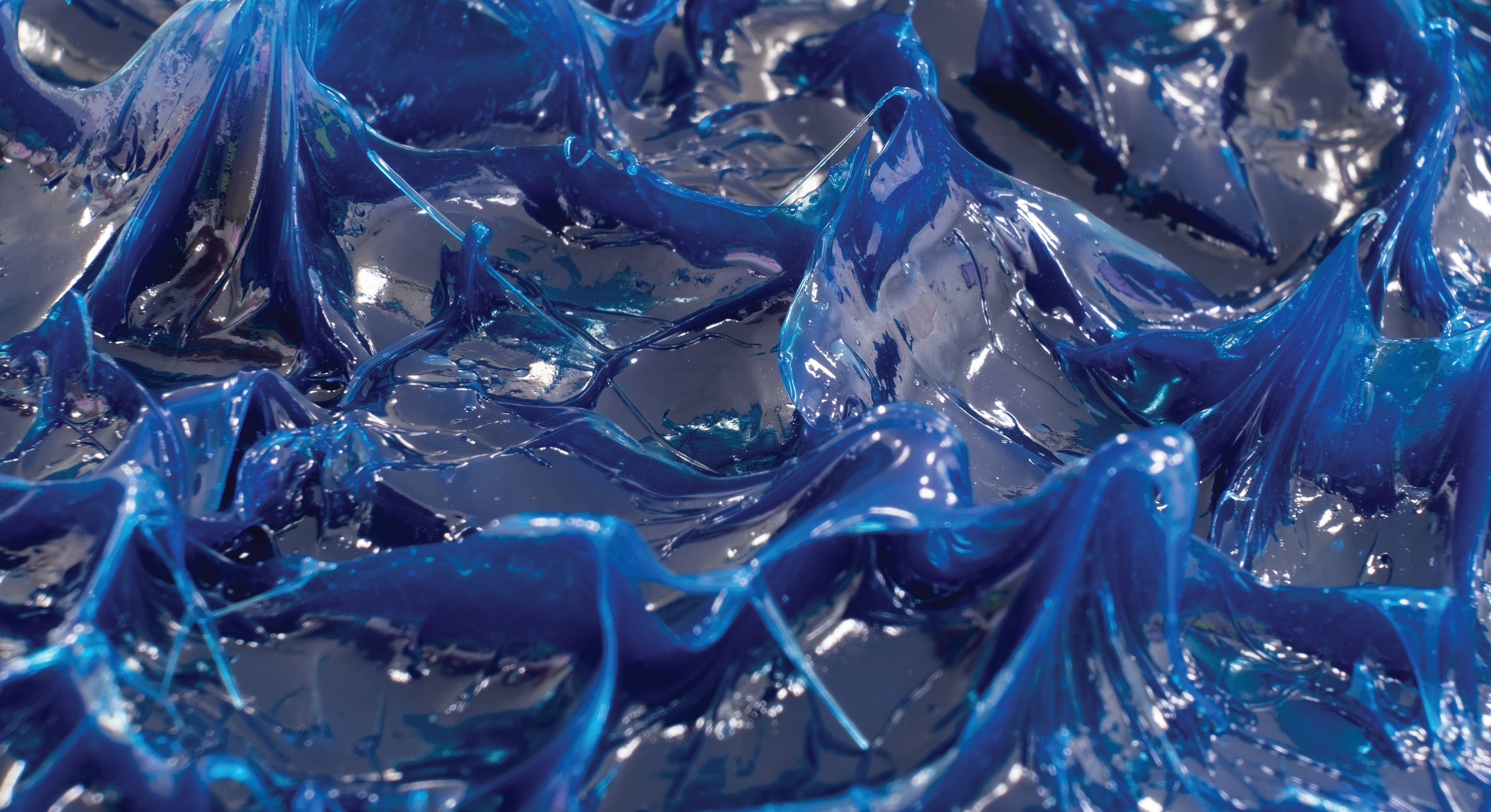
Identifying the right grease can be challenging as the grease manufacturing process has dramatic impacts on the properties of the final product, and parts of the process require experience to fully control. Base oil The base oil used in a grease influences high and low temperature properties, viscosity and thickening efficiencies. In relation to greases, Zabawski notes that “generally lower viscosity base oils are used for low-load/high-speed applications, and higher viscosity base oils are used for high- load/low-speed applications.” Greases have a high initial viscosity that drops with the application of shear to approximately the same viscosity as the base oil used in the grease. Greases made with synthetic oil (e.g., polyalphaolefin) are expected to possess better high and low temperature characteristics compared to grease made with mineral oils.” Naphthenic oils can result in lower thickener content that could improve pumpability in specific applications and improve other grease properties.” Certain synthetic oils also can offer special advantages under specific operating conditions, as well as offering material compatibility with seals. Thickeners The thickener is what sets a grease apart from a fluid lubricant. The thickener is a molecule, polymer or solid that is typically partially soluble in the lubricating fluid and imparts a semi-solid consistency to the grease. Soaps can be grease thickeners, while non-soap thickeners include polyurea, organophilic clays (e.g., bentonite) and other materials. Thickeners may be fibrous, spherical or platelets, and have an impact on the final grease properties. The following properties are impacted by the chosen thickener: • The texture, which relates to the appearance and feel of a grease and affects its adhesiveness; • Dropping point, which is the temperature at which the grease releases a drop of oil under standard test conditions; • Shear or mechanical stability, which is the ability to resist permanent changes in consistency due to work; • Water resistance, which is the ability to withstand water without adverse effects on the grease’s structure; • Pumpability, which is the ability of a grease to flow under pressure through the grease dispensing system.2 A simple or conventional grease is prepared by reacting a single organic acid with one or more inorganic bases, while a complex thickener is prepared from two or more organic acids (e.g., a primary soap [metallic stearate] and a complexing agent [metallic salt]).3 The chosen agent modifies the grease characteristics and usually increases the dropping point, which is generally considered to be the temperature at which the thickener system fails, which helps to define the grease’s maximum service temperature. Conventional lubricating greases are based on lithium, calcium, sodium, aluminum, barium or their complexes. According to a 2018 survey of worldwide grease production, 74.18%, by volume, contain lithium soap thickener. The type of thickener influences grease properties such as temperature resistance, which relates to viscosity, and water washout, which is the ability of the grease to still perform and remain intact when submerged in water. Kumar notes that greases based on calcium, calcium sulfonate and aluminum complex thickeners are expected to possess better water resistance characteristics compared to sodium-based thickeners. Clay thickeners have no defined melting point, so they have been used in high temperature applications. The thickener type determines the type of application where the grease can be used (e.g., high temperature, excessive water or moisture exposure, electrical device suitability, food-grade). For example, lithium cannot be used in a food-grade grease, but aluminum can be. Kay says that “some thickeners actually have inherent property advantages that avoid the need for specialty additives.”